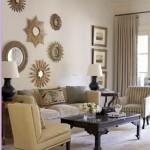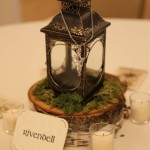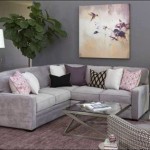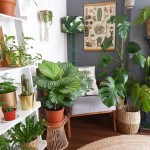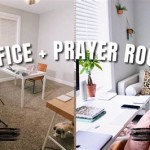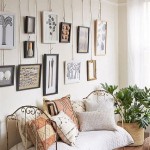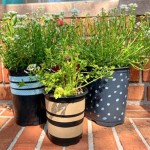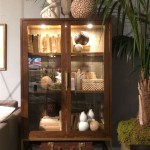How to Decorate a Foyer Table for Fall
The foyer table, often the first piece of furniture encountered upon entering a home, presents a significant opportunity to create a welcoming and aesthetically pleasing first impression. During the fall season, decorating this space with autumnal elements can instantly infuse warmth and seasonal charm into the home. This article will provide comprehensive guidance on how to effectively decorate a foyer table for fall, covering key considerations, styling techniques, and seasonal accents.
Determining the Appropriate Scale and Proportion
Before embarking on the decorating process, it is essential to assess the size and style of the foyer table itself and the surrounding space. The scale of the decorations should be proportionate to the size of the table and the overall dimensions of the foyer. A small table in a narrow entryway requires a minimalist approach with fewer, smaller items, while a larger table in a spacious foyer can accommodate a more elaborate display.
Consider the height of the table in relation to other furniture and architectural elements in the foyer. Tall decorations can visually overwhelm a low table, while short decorations may appear lost on a high table. To achieve visual balance, aim for a layered arrangement with varying heights. Avoid obscuring sightlines; the foyer table should enhance the entrance without creating an obstruction.
The table's shape also plays a role in determining the optimal arrangement. A round table lends itself to a circular or radial design, while a rectangular or square table is well-suited for a symmetrical or linear layout. The material of the table, such as wood, metal, or glass, can influence the choice of decorative elements. A rustic wooden table may complement natural, earthy tones, while a sleek modern table might call for more contemporary and minimalist decorations.
Furthermore, the existing decor in the foyer should be taken into account. The color scheme, architectural style, and overall aesthetic of the space should guide the selection of fall decorations. Strive for a cohesive look that complements the existing decor rather than clashing with it.
Selecting a Color Palette and Theme
The color palette and theme are the foundation of any effective fall decor. Traditional fall color schemes typically revolve around warm, earthy tones such as oranges, reds, yellows, and browns. However, a wider range of options exists to create a more personalized and sophisticated look. Consider incorporating muted tones such as sage green, dusty rose, or deep plum for a more subtle and elegant aesthetic.
When selecting a color palette, consider the existing colors in the foyer and the overall desired mood. Warm colors create a cozy and inviting atmosphere, while cooler colors can add a touch of sophistication and tranquility. Incorporating metallic accents such as gold, copper, or bronze can add a touch of glamour and visual interest.
In addition to color, consider a specific theme for the fall decor. Popular themes include rustic farmhouse, woodland, harvest, and contemporary. A rustic farmhouse theme might incorporate elements such as galvanized metal, burlap, and reclaimed wood, while a woodland theme could feature natural elements such as leaves, branches, and pinecones. A harvest theme often includes pumpkins, gourds, and corn stalks, while a contemporary theme might focus on clean lines, geometric shapes, and minimalist arrangements.
Choosing a theme provides a cohesive framework for selecting decorative elements and ensures a unified and visually appealing display. The theme should be reflected in all aspects of the decor, from the color palette to the choice of materials and accessories.
Incorporating Key Fall Elements
The success of a fall-themed foyer table hinges on the strategic incorporation of key seasonal elements. These elements should not only reflect the aesthetic of autumn but also contribute to the overall visual balance and appeal of the display.
Pumpkins and gourds are quintessential fall decorations. Choose a variety of sizes, shapes, and colors to create visual interest. Consider using both real and faux pumpkins, as faux pumpkins offer the advantage of longevity and can be reused year after year. Arrange pumpkins and gourds in clusters or stacks, incorporating other elements such as leaves, berries, or candles.
Fall foliage, whether real or artificial, is another essential element. Use branches of colorful leaves, such as maple, oak, or birch, to add height and visual impact. Arrange the branches in a vase or container, or drape them across the table surface. Consider incorporating dried flowers or seed heads for added texture and interest.
Candles and lanterns create a warm and inviting ambiance. Choose candles in fall-inspired scents such as pumpkin spice, apple cinnamon, or cranberry. Use lanterns to add a touch of rustic charm and provide a soft, ambient light. Battery-operated candles are a safe and convenient alternative to traditional candles.
Textural elements such as burlap, plaid, and knit fabrics can add warmth and depth to the display. Use a burlap table runner or placemats to create a rustic backdrop. Incorporate plaid pillows or throws for added comfort and visual interest. A knit blanket draped over a nearby chair can further enhance the cozy atmosphere.
Consider adding natural elements such as pinecones, acorns, and chestnuts to create a woodland-inspired display. These elements can be arranged in bowls or scattered across the table surface. You can also incorporate natural elements such as branches or twigs to add height and structure to the display.
Personalized touches can elevate the decor and make it feel more unique and meaningful. Consider adding framed photos, family heirlooms, or handcrafted items that reflect your personal style and interests. A personalized welcome sign or a framed quote about fall can add a welcoming touch.
Arranging the Elements with Balance and Harmony
The arrangement of the decorative elements is crucial to creating a visually appealing and balanced display. Several principles of design, such as symmetry, asymmetry, and the rule of thirds, can be applied to achieve a harmonious composition.
Symmetrical arrangements create a sense of formality and order. In a symmetrical arrangement, the same elements are mirrored on either side of a central focal point. This approach is well-suited for traditional or formal foyers.
Asymmetrical arrangements are more dynamic and informal. In an asymmetrical arrangement, elements are balanced in a more organic and less predictable way. This approach is well-suited for contemporary or eclectic foyers.
The rule of thirds is a guideline that suggests dividing the table into thirds both horizontally and vertically. The intersections of these lines create focal points where key elements should be placed. This technique helps to create a visually balanced and interesting composition.
Varying the height of the elements creates visual interest and prevents the display from appearing flat. Use taller elements, such as branches or candlesticks, to create vertical interest, and shorter elements, such as pumpkins or gourds, to create horizontal interest.
Layering the elements adds depth and dimension to the display. Place smaller elements in front of larger elements to create a sense of depth. Overlapping elements can also add visual interest and prevent the display from appearing too static.
Consider the negative space, or the empty space, around the elements. Too many elements crowded together can create a cluttered and overwhelming look. Leave some empty space to allow the eye to rest and appreciate the individual elements.
Lighting Considerations
Lighting plays a crucial role in enhancing the ambiance and highlighting the decorative elements on the foyer table. A well-lit foyer table can create a warm and inviting atmosphere and draw attention to the fall decor. Consider both natural and artificial lighting options.
If the foyer receives natural light, maximize its impact by positioning the table near a window or doorway. Natural light can enhance the colors and textures of the fall decorations and create a bright and cheerful atmosphere.
In foyers with limited natural light, artificial lighting is essential. Table lamps are a classic choice for foyer tables, providing both functional and decorative lighting. Choose a lamp with a warm-toned bulb to create a cozy ambiance.
Candles and lanterns can also provide soft, ambient lighting. Use candles in fall-inspired scents to add a touch of fragrance to the foyer. Consider using battery-operated candles for safety and convenience.
String lights can add a whimsical touch to the fall decor. Drape string lights across the table or around the surrounding area to create a festive atmosphere. Choose string lights with warm-toned bulbs for a soft and inviting glow.
Consider using uplighting to highlight specific elements of the decor. Uplighting can be used to accentuate the texture of a pumpkin or the shape of a vase. This technique can add depth and dimension to the display.
Adjust the lighting to suit the time of day. During the day, maximize natural light or use brighter artificial lighting. In the evening, dim the lights and rely more on candles and lanterns to create a warm and inviting atmosphere.
:max_bytes(150000):strip_icc()/243711869_153873136950943_2366996751538367766_n-0ae8fee275bd4020a773c594ba605634.jpg?strip=all)
33 Fall Entryway Decor Ideas To Welcome Autumn

23 Amazing Ways To Style Your Console Table With Fall Decor Home Modern

Fall Entry Table Decor Sharing Sisterhood Blog

25 Ideas To Style Your Console Table For Fall Digsdigs

15 Ideas To Decorate The Entryway For Fall Shelterness

Entry Table Decor Tips And Ideas For Fall Worthing Court

25 Ideas To Style Your Console Table For Fall Digsdigs

Unique And Charming Fall Decor Ideas Farmhousehub

23 Amazing Ways To Style Your Console Table With Fall Decor
Plum Pretty Decor Design Co Fall Entryway Table With Joann
Related Posts
